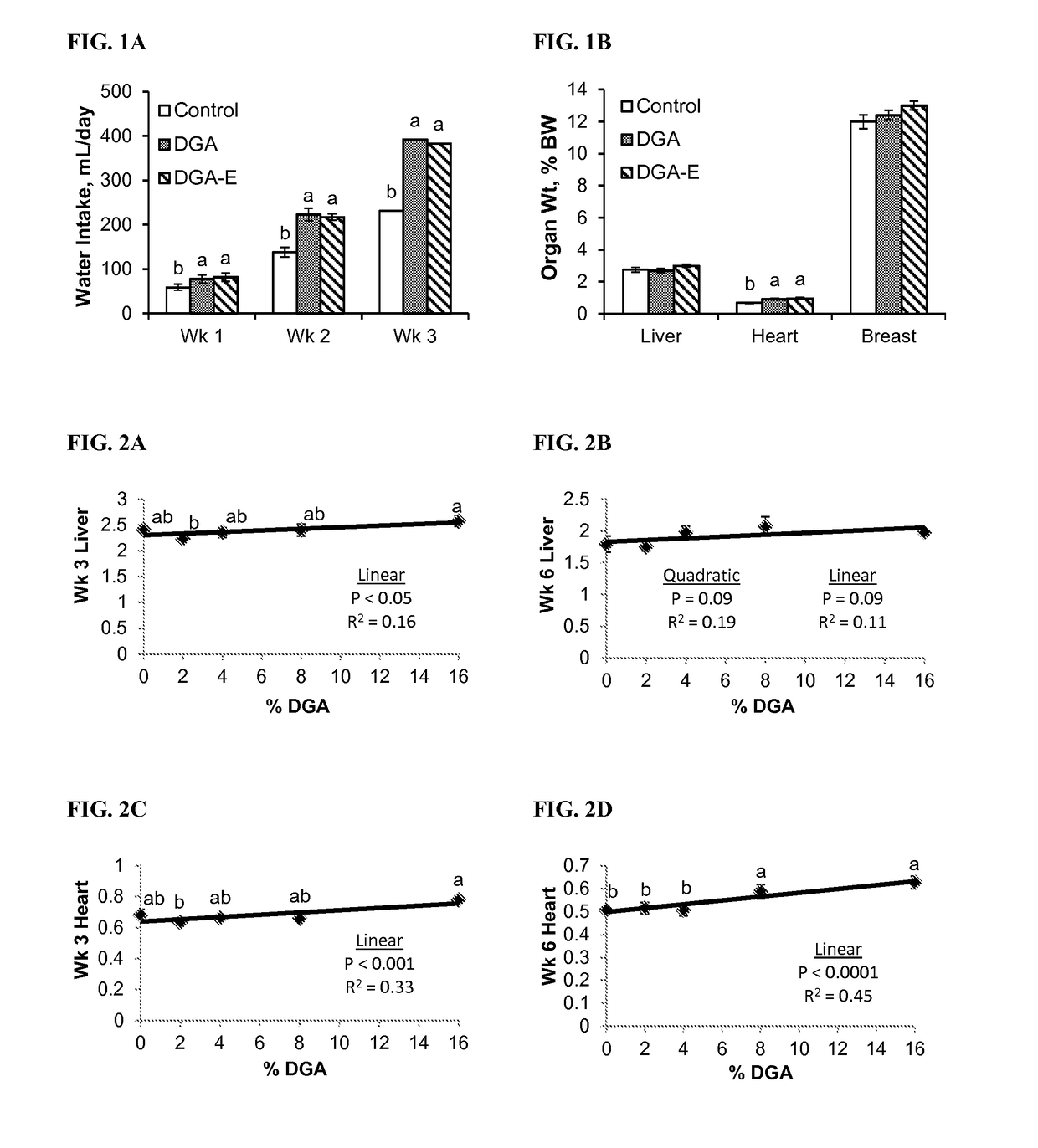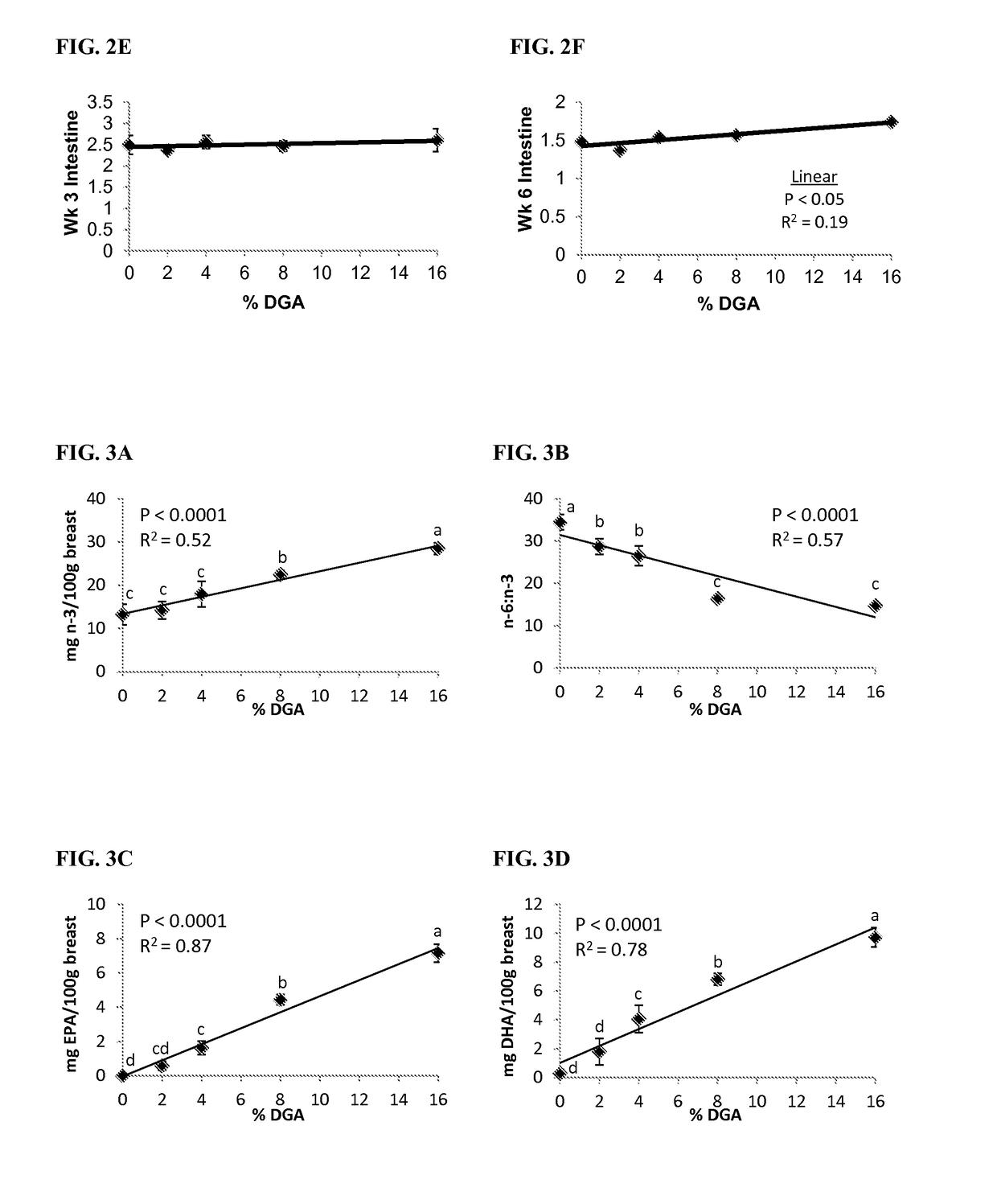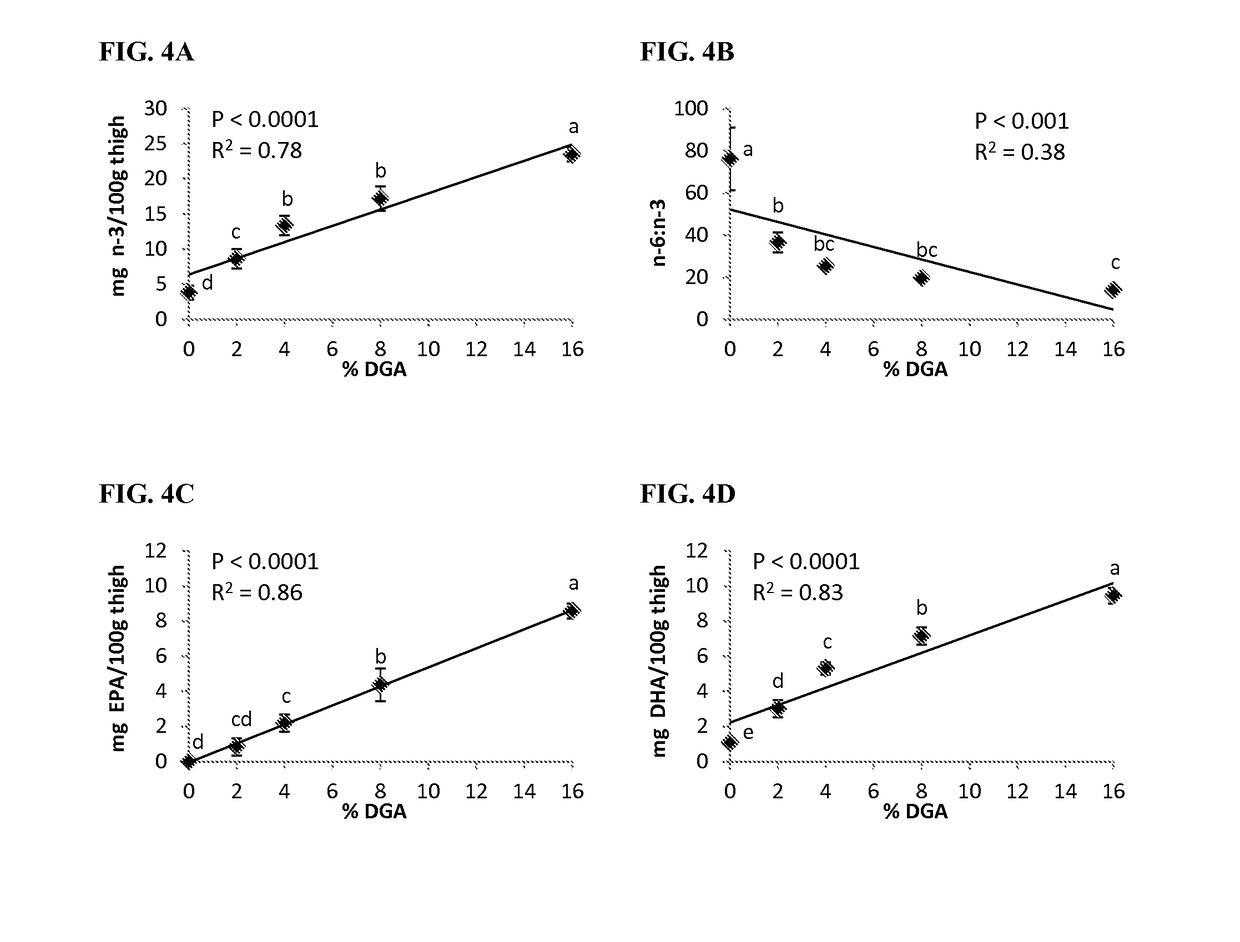Omega-3 fatty acid enrichment of poultry products with defatted microalgae animal feed
- Summary
- Abstract
- Description
- Claims
- Application Information
AI Technical Summary
Benefits of technology
Problems solved by technology
Method used
Image
Examples
example 1
ve Effects of Microalgal Biomass and Flaxseed Oil on n-3 Fatty Acid Enrichment of Eggs
[0113]Materials and Methods
[0114]Animals
[0115]Animal protocols were approved by the Cornell University Institutional Animal Care and Use Committee. The three types of microalgal biomass (Table 1) were obtained from Cellana (Kailua-Kona, Hi.). Type A was full-fatted Staurosira sp., type B was defatted Desmodesmus sp., and type C was defatted Nannochloropsis oceanica. The flaxseed oil was purchased from Dyets (Bethlehem, Pa., Catalog #402511).
TABLE 1Proximate Analysis (%) and Fatty Acid Composition (%) of Flaxseed Oil and Algae Used in Experiments I and IIFlaxseed oilAlgae AAlgae BAlgae CDry matter, %—85.8096.0095.30Crude protein,—13.9031.2038.20%Ether extract, %100.0030.101.101.50Lysine, %—0.571.612.27Methionine, %—0.260.210.57Cysteine, %—0.190.330.30Calcium, %—3.810.330.28Phosphorus, %—0.600.650.69Fatty acid, %C14:00.048.311.217.44C14:1N.D.0.11N.D.0.12C16:04.5951.8435.6129.21C16:10.0535.681.5925.24...
example 2
tal Defatted Green Microalgal Biomass Exerts Dose-Dependent Effects on Growth Performance, Water Intake, Phosphorus and DNA Retention, and Bone Properties of Broilers
[0140]Materials and Methods
[0141]Experimental Diets and Animal Care
[0142]All animal protocols were approved by the Institutional Animal Care and Use Committee of Cornell University. Both experiments were conducted at the Cornell University Poultry Research Farm. Male hatchling Ross broiler chicks (1 day old) were obtained from a commercial hatchery and housed in temperature-controlled cage batteries. During the starter (0 to 3 weeks) and grower (3 to 6 weeks) periods, chicks were housed in groups of 6 and 4 per cage, respectively. All birds had free access to feed and water and received a lighting schedule of 22 hours of light and 2 hours of darkness daily. Body weights (“BW”) were recorded at the beginning of each experiment, and BW and feed consumption were recorded weekly thereafter. Water intakes were recorded daily...
example 3
Omega-3 Enriched Broiler Chicken Using De-Fatted Green Microalgal Biomass
[0168]Materials and Methods
[0169]Animals, Diets, and Management
[0170]All protocols of this experiment were approved by the Institutional Animal Care and Use Committee of Cornell University. Male hatchling Ross broiler chicks were obtained from a commercial hatchery and housed in a temperature-controlled room in an animal research building at the Cornell University Poultry Research Farm. The broiler chicks were housed in thermostatically-controlled cage batteries for the first 3 weeks, with 6 chicks per cage; 4 chicks were then transferred to grower cages at room temperature from weeks 3 to 6. Chicks had free access to feed and water and received a lighting schedule of 22 hours of light and 2 hours of darkness. Birds were fed one of five dietary treatments (n=6), containing 0% (Control), 2%, 4%, 8%, or 16% DGA, on an “as is” basis, replacing a mixture of corn and soybean meal. Starter (0 to 3 weeks) and grower (...
PUM
 Login to View More
Login to View More Abstract
Description
Claims
Application Information
 Login to View More
Login to View More - R&D Engineer
- R&D Manager
- IP Professional
- Industry Leading Data Capabilities
- Powerful AI technology
- Patent DNA Extraction
Browse by: Latest US Patents, China's latest patents, Technical Efficacy Thesaurus, Application Domain, Technology Topic, Popular Technical Reports.
© 2024 PatSnap. All rights reserved.Legal|Privacy policy|Modern Slavery Act Transparency Statement|Sitemap|About US| Contact US: help@patsnap.com










